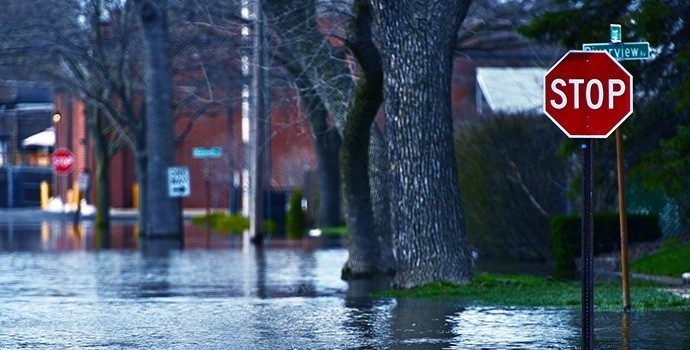During the Storm
Safety is our top priority every day, but even more so during a storm. This means your safety and that of our crews. Learn how to keep you and your family safe and prepared for any type of storm.

Floods
Flash flooding is the No. 1 weather-related killer in the United States. Flooding can occur after just minutes of heavy rainfall. Floods may happen anywhere and at any time.
Tips to Remember
Listen for flood warnings; move to higher ground if needed.
Never walk or drive through floodwaters – depth and currents can be deceptive.
Abandon stalled vehicles and seek higher ground.
Be especially cautious at night when dangers are harder to see.
Keep an emergency kit in your vehicle in case of flooding.
Learn the Lingo
Knowing the following terms will help you better prepare for a flood.
- FLOOD/FLASH FLOOD WATCH – Alerts the public to rain that could cause flash flooding. Be prepared for floods.
- FLOOD/FLASH FLOOD WARNING – Alerts the public to flash flooding that is happening or about to happen. Move to safe ground immediately.

Thunderstorms
About 100,000 thunderstorms occur yearly in the United States. Only 10 percent are severe, but all can produce lightning, strong winds, hail, tornadoes and heavy rain.
Tips to Remember
- Stay aware of weather updates via NOAA Weather Radio.
- Take shelter indoors, away from windows, doors and electrical appliances.
- Avoid using landline phones or plumbing.
- Turn off air conditioners to prevent power surges.
- Unplug unnecessary electrical devices.
- Get out of boats and water.
- Shelter under low trees if caught outside (avoid tall or isolated trees).
- In a lightning emergency, squat low with minimal ground contact.
- Do not shower or bathe during the storm.
Learn the Lingo
Knowing the following terms will help you better prepare for when a thunderstorm does happen.
- SEVERE THUNDERSTORM WATCHES – Alerts the public to when and where severe thunderstorms are likely to occur.
- SEVERE THUNDERSTORM WARNINGS – Alerts the public to storms reported by spotters or appearing on radar.
